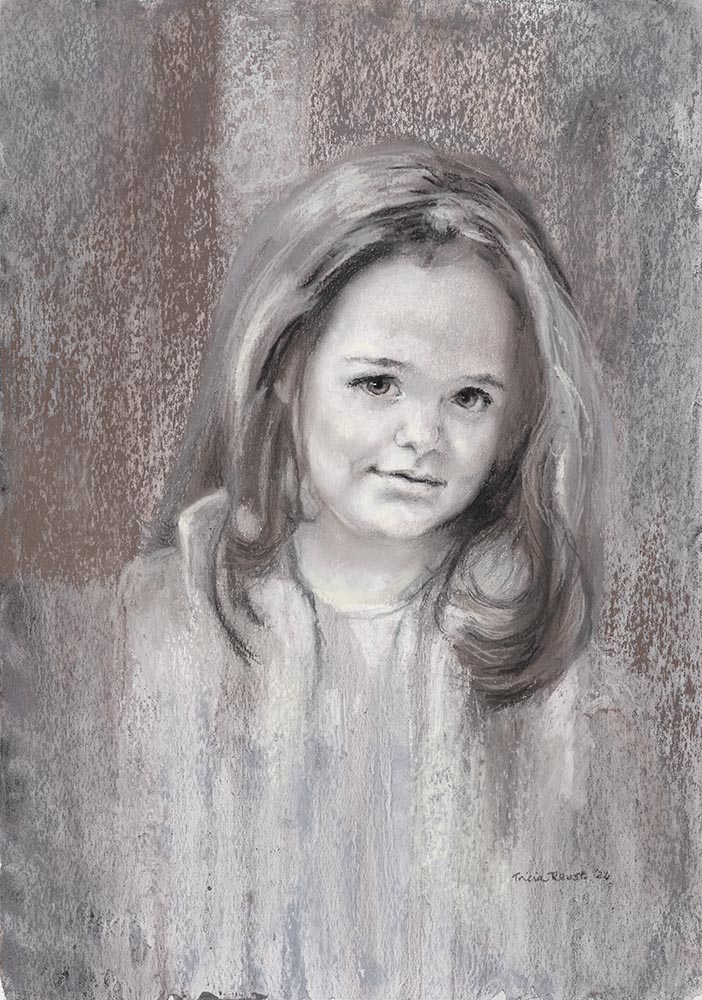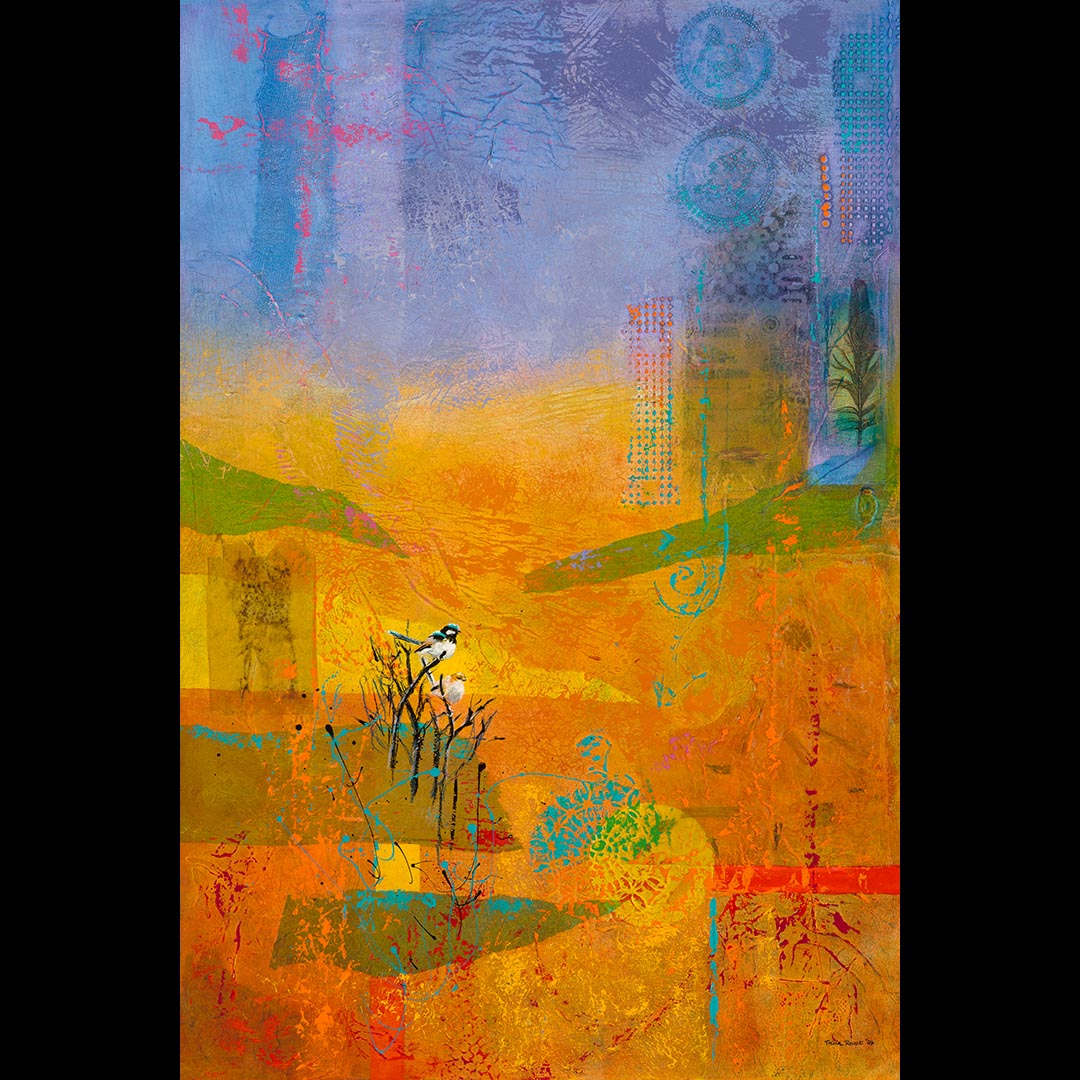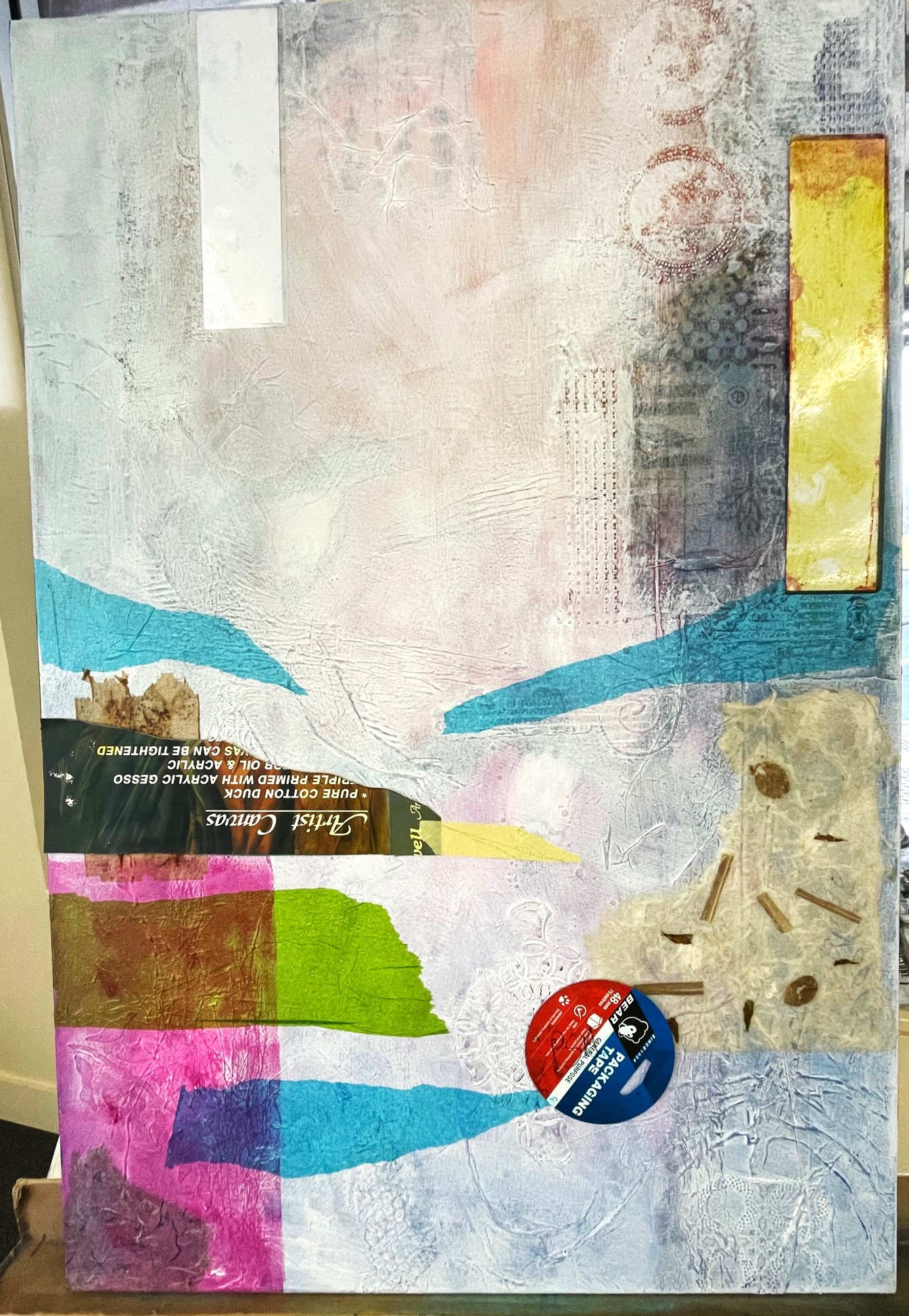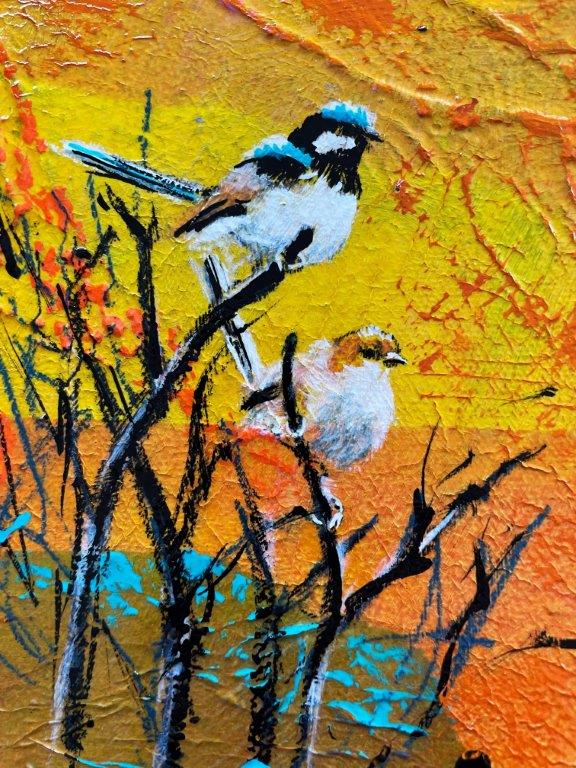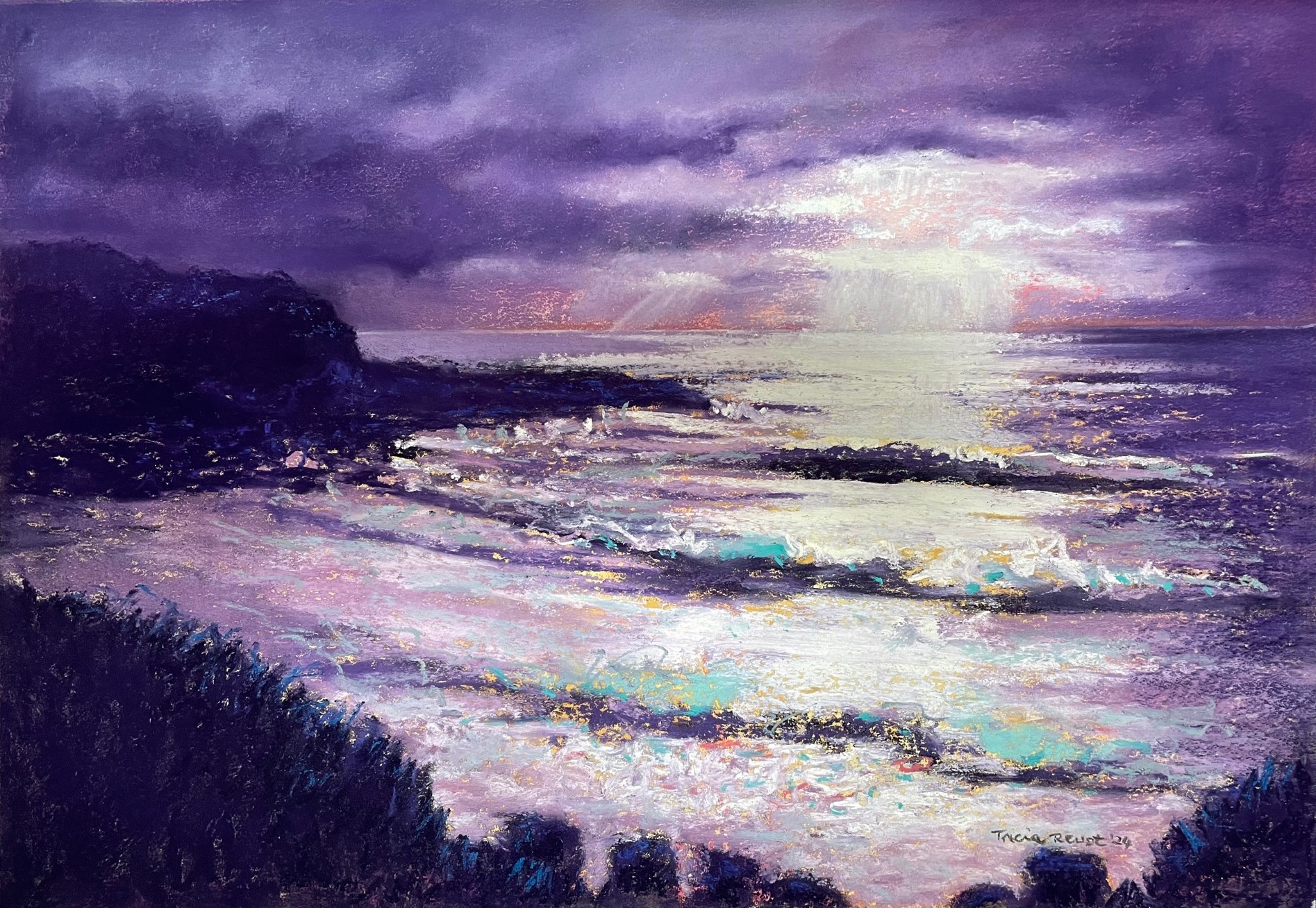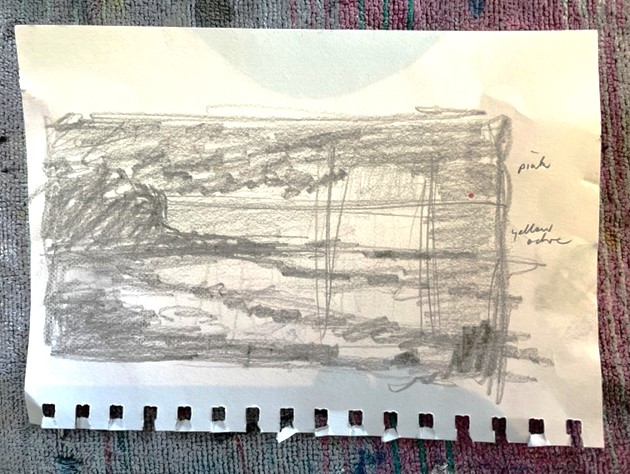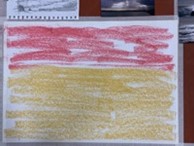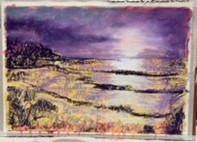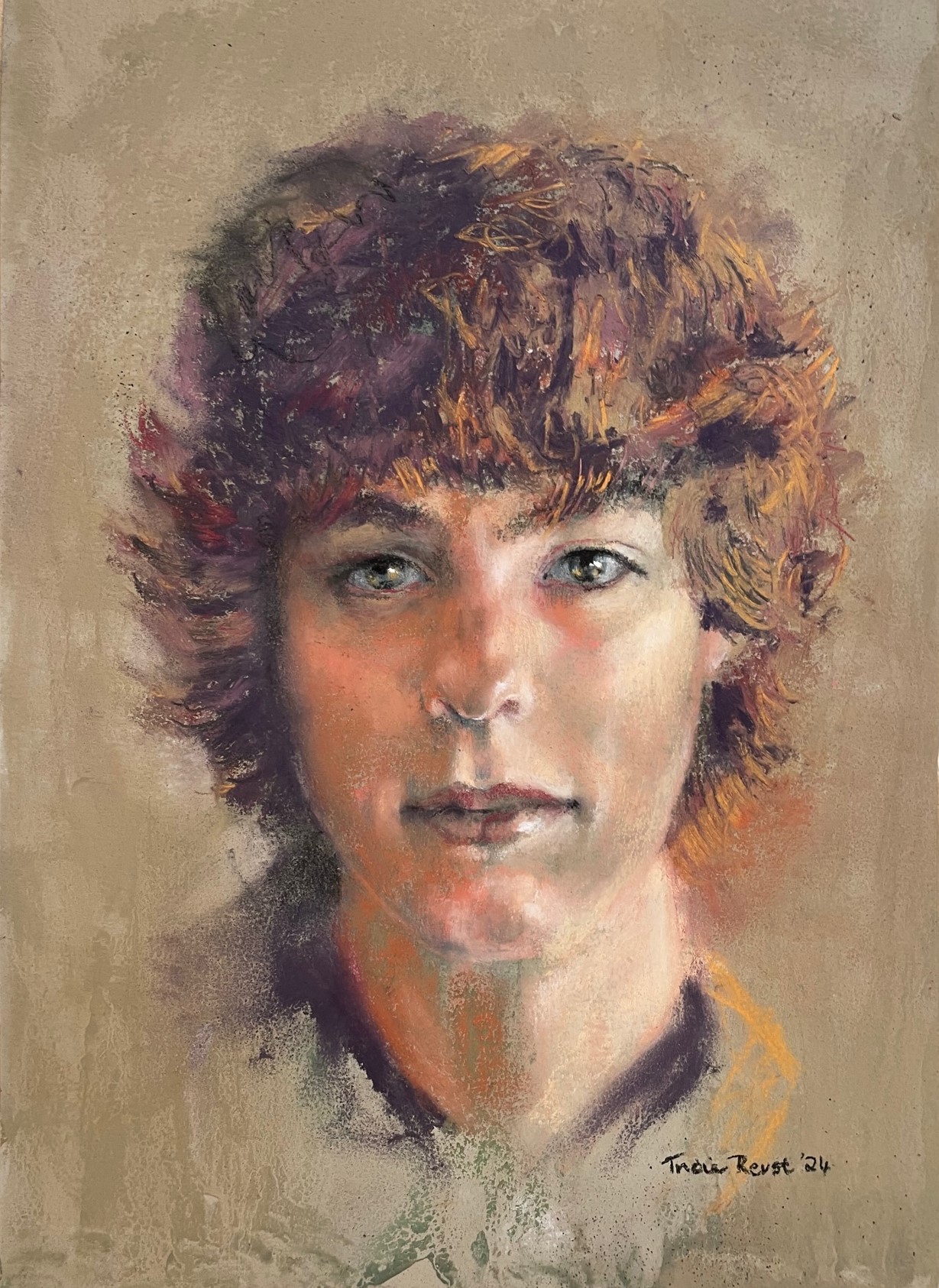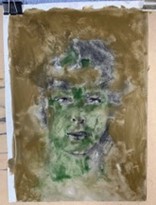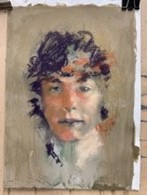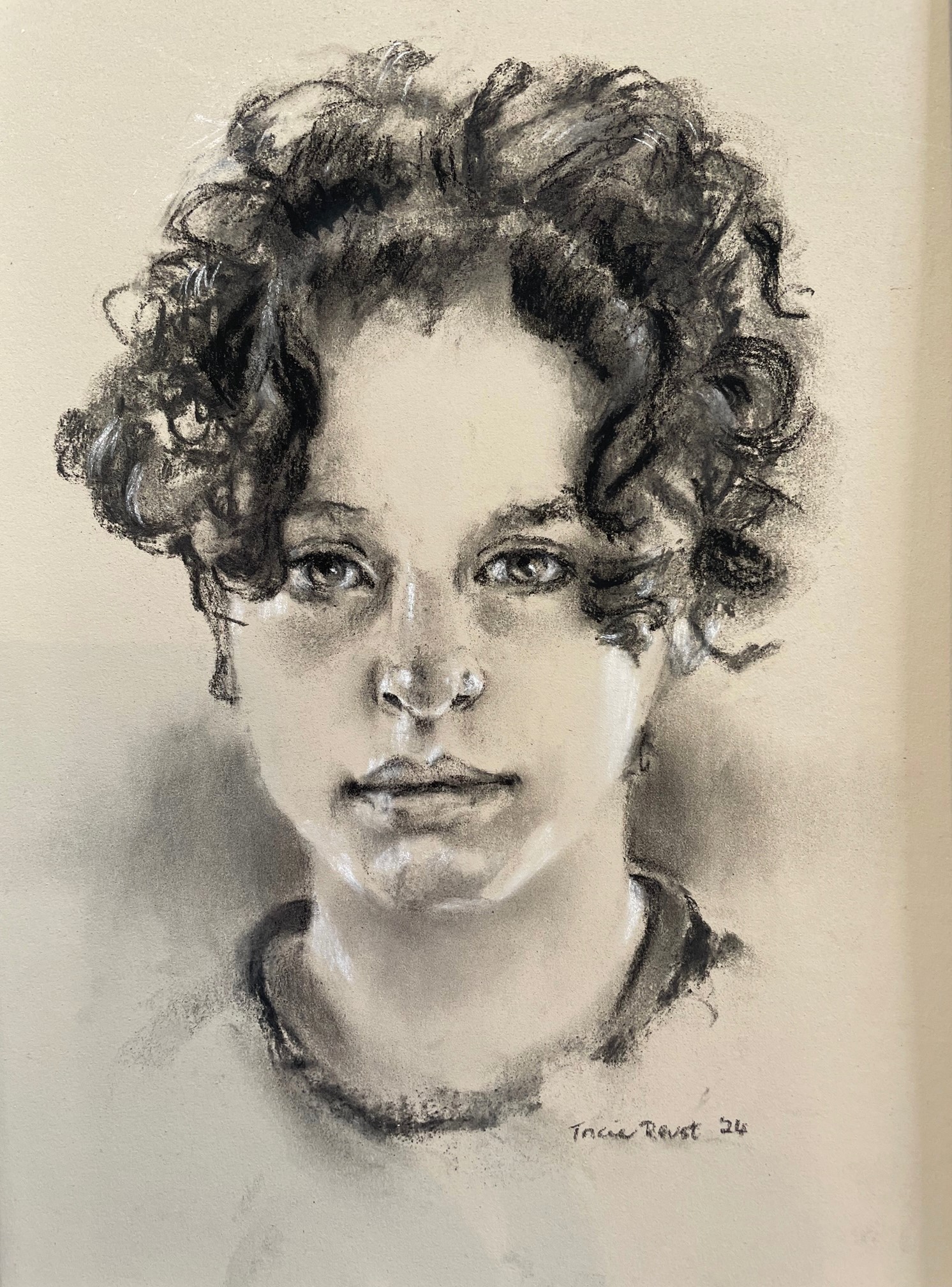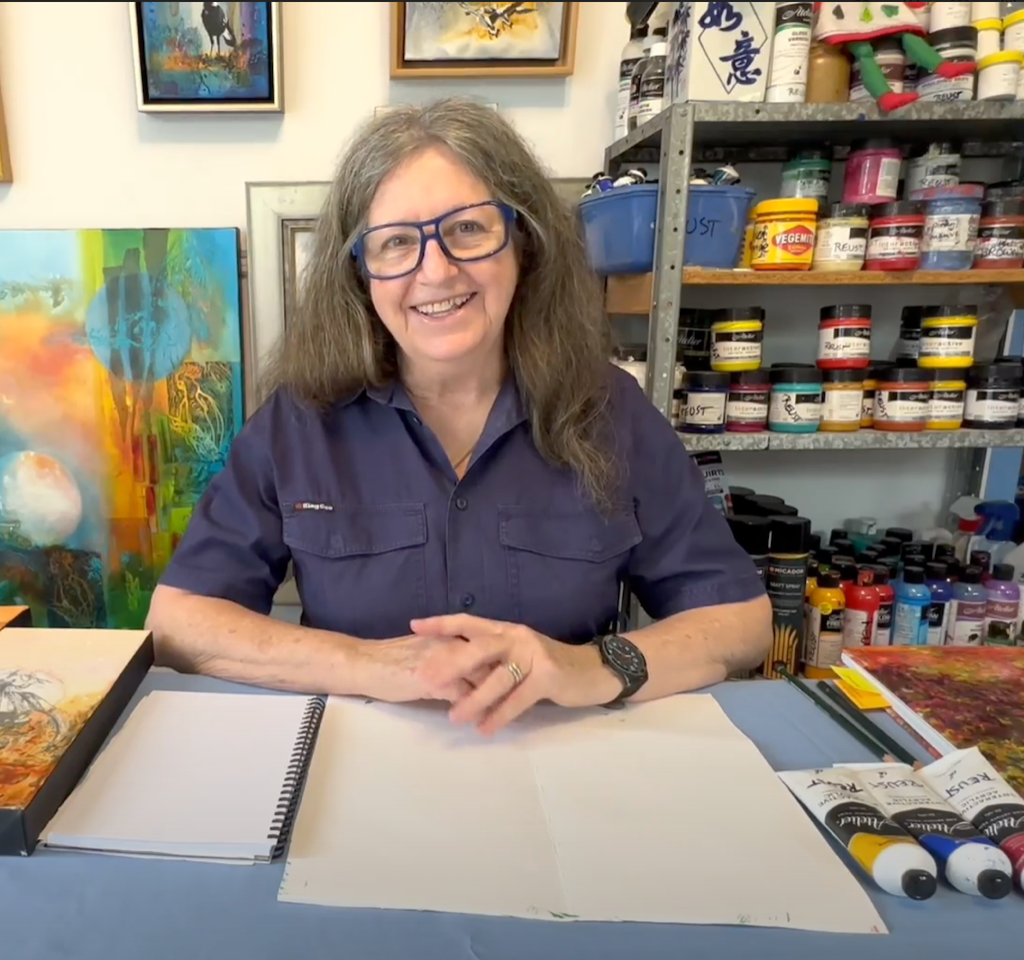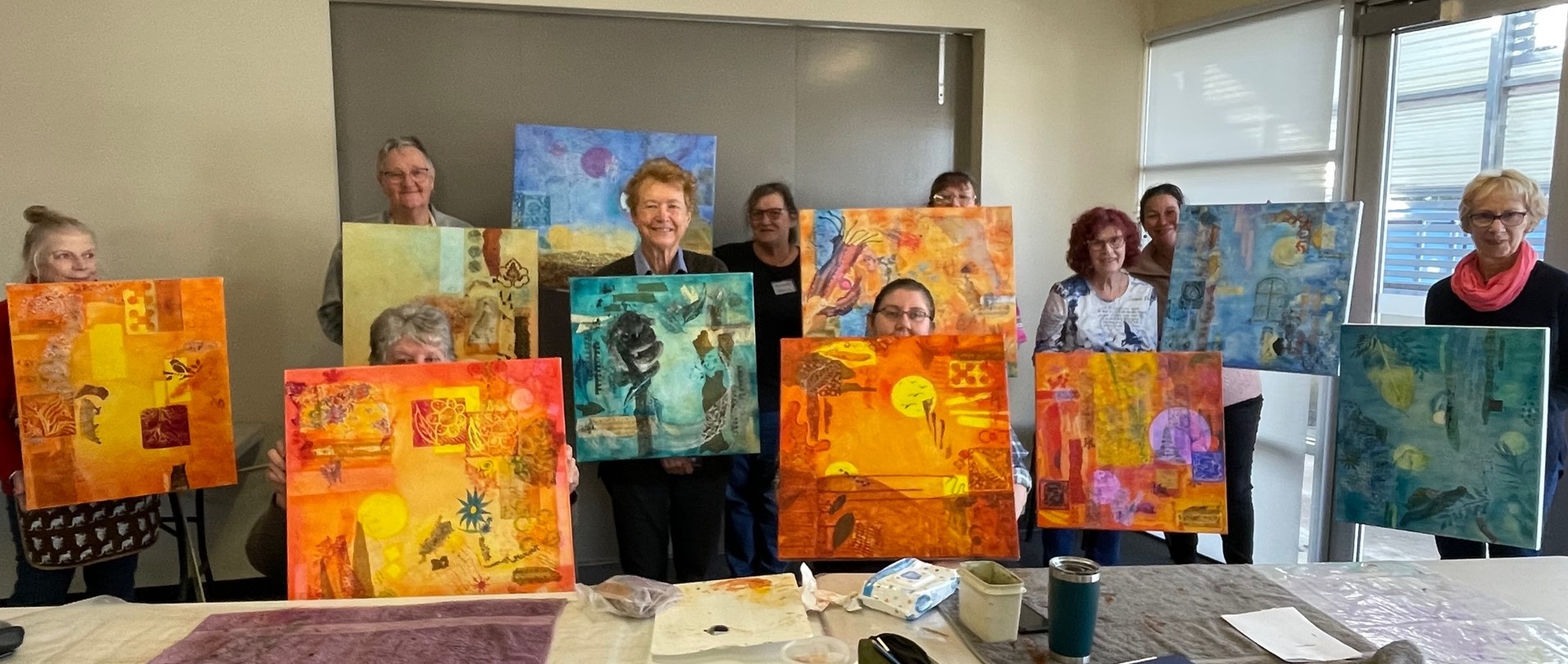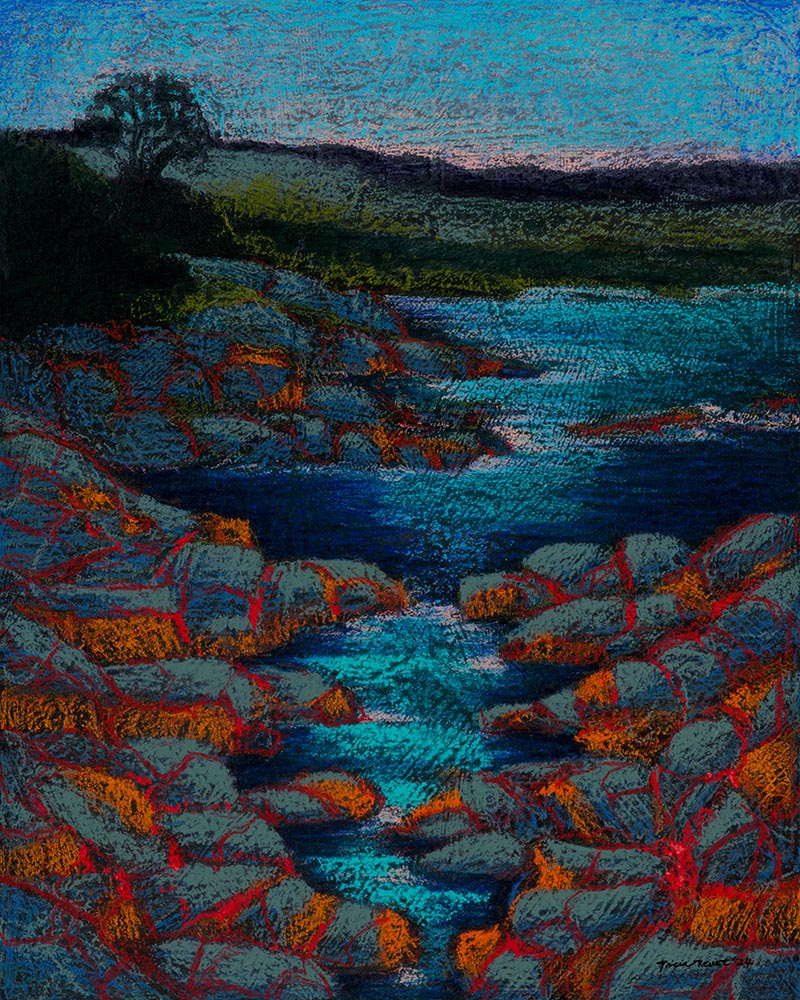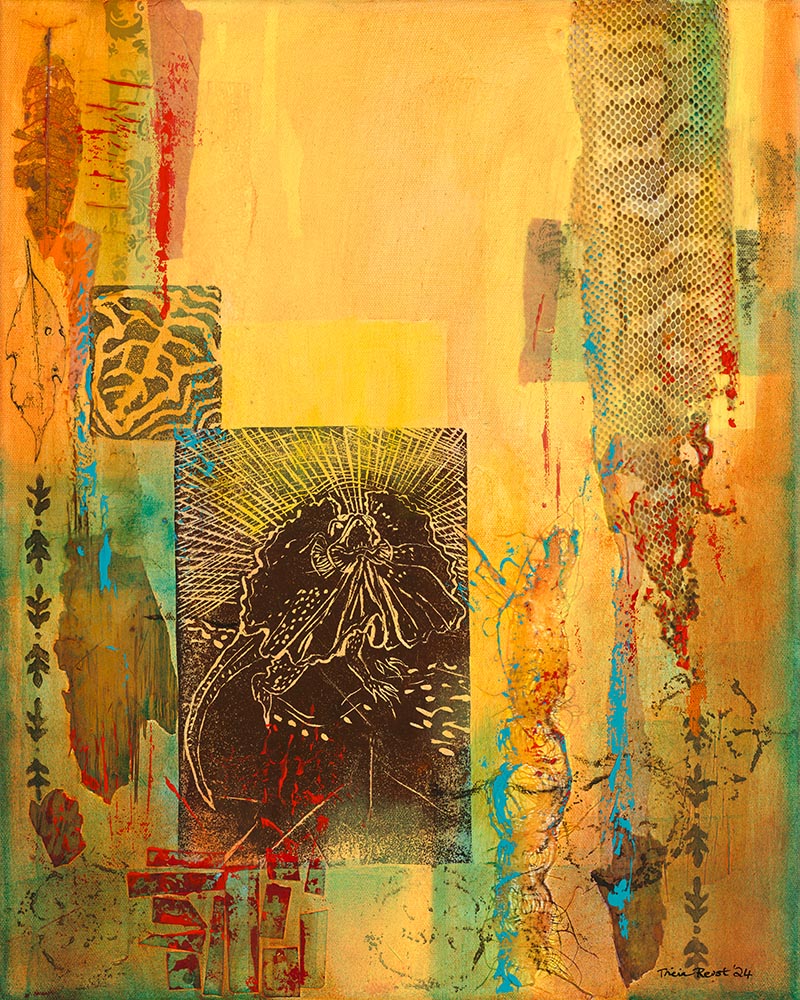When I do a work for myself, as apart from a demonstration or teaching piece, I begin my defining my concept. This work began as a desire to comment on the many people in our world fleeing war and strife and seeking assistance from others. I wanted the ground to infer desert; I wanted a strong symbol of wealth – not only material but spiritual; and I needed to find a way of representing a multitude of streaming people. I decided on one of my blue and white jars with a lid, as a central motif of a container full of desirable offerings. The lid of course – fear often keeps the lid on our being generous in response to need.
Now came the decisions about composition. I decided pastel would give the easiest method of contrast between texture in fabric and smoothness in the ceramic surface. Adding pumice to primer would make the paper very rough and give a tangible feeling of sand. A placement of the jar according to the golden mean would give me lots of opportunity to create directions in the fabric leading the eye to the jar, and an almost square format (because I already had a used empty frame ready for a new work!). The hardest motif was in searching for something to represent people. After many scribbles in my visual diary I settled on marks like curved dashes with dots at the head.
Only now could I begin on the creating of the work, with my concept defined and all my compositional decisions made.

1. I mixed dry pumice into wet Art Spectrum pastel primer (Soft Umber in colour) and applied over an old pastel work on rough watercolour paper. I distributed the pumice unevenly over the surface.
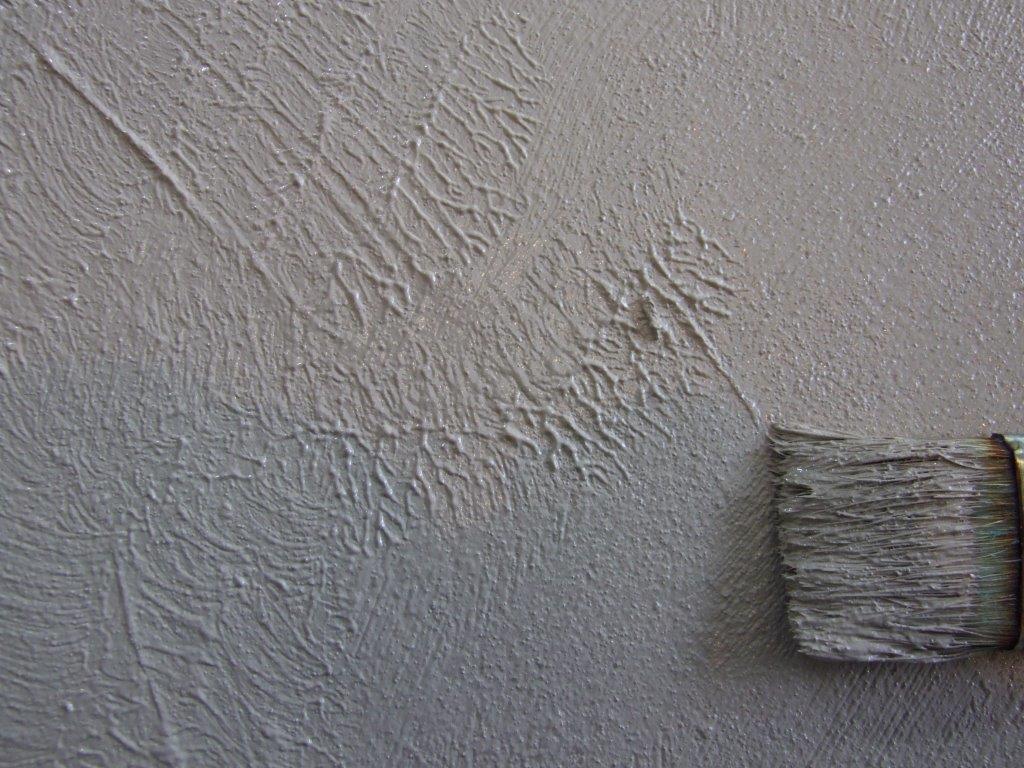
2. I used the same wide old bristle brush to add texture marks, patting it in some areas to leave raised marks, and adding directional marks.

3. Using soft pastel I placed the basic composition, ensuring the highlights on the fabric all led to the jar.
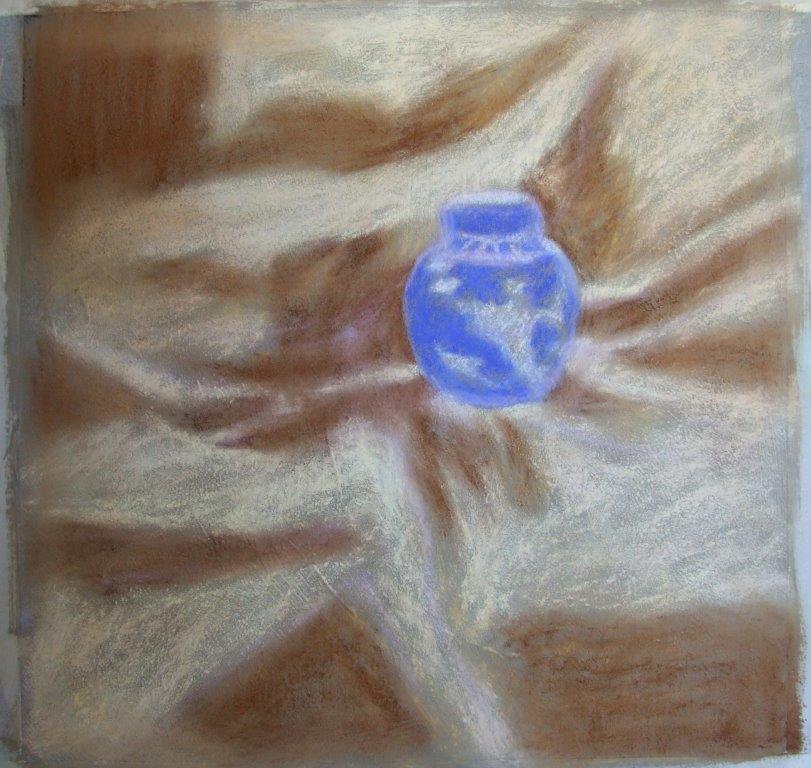
4. I then covered the surface with more soft pastel to establish a base and to begin to refine the drawing. I was really happy with the texture – even though representing fabric folds, I wanted a visual and tactile reference to sandy parched earth.

5. I used a flat bristle brush to push water into the layers of black, purple and ultramarine blue, so that there would be flat areas in the shadows. Wet pastel would flow better into the recesses of the texture marks.

6. When this dried, I continued to place soft pastel. The rough texture was a bit hard on the old fingers! I began to draw in the linear marks with dots – symbols of an untidy mass of humanity reaching towards a sealed receptacle of available nourishment.
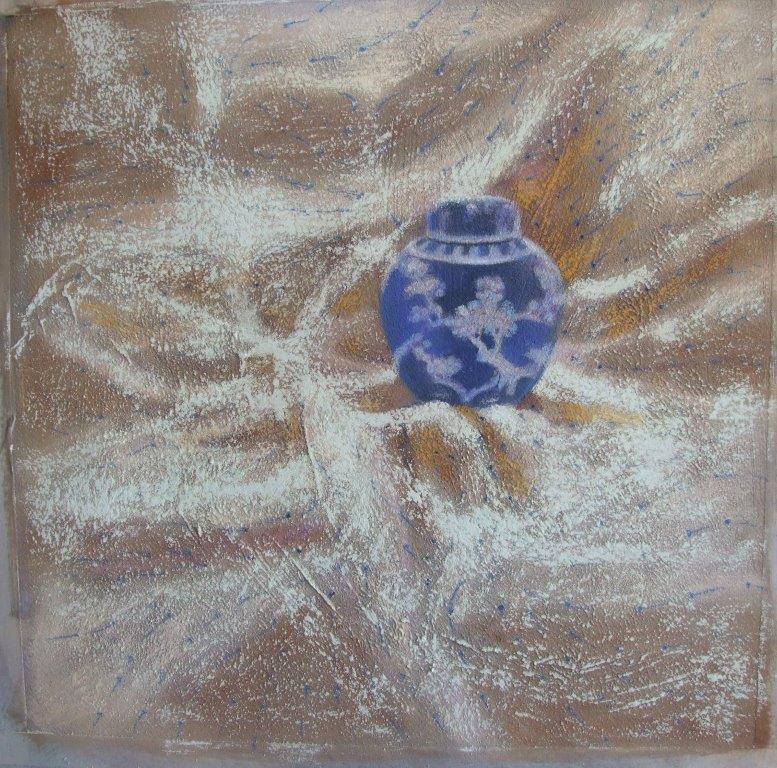
7. I darkened the dots on the marks closer to the jar. Using the new Art Spectrum soft square pastels, I placed a blue white over all the fabric area, deliberately creating cross flows in the fabric directions and catching the tips of the pumice texture marks. I placed touches of Red Gold around the fabric close to the jar.
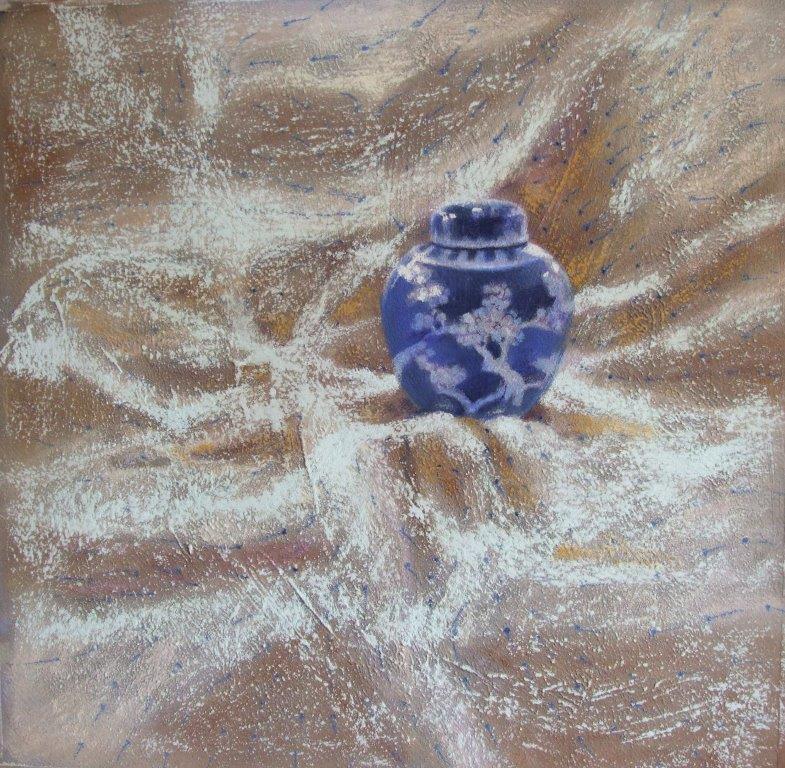
8. I worked more on the jar, using a new AS soft square orange white for the highlights, and using a blue white for heavier accents in the fabric. “Open Up!” 47.5 h by 46 w cms.
